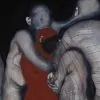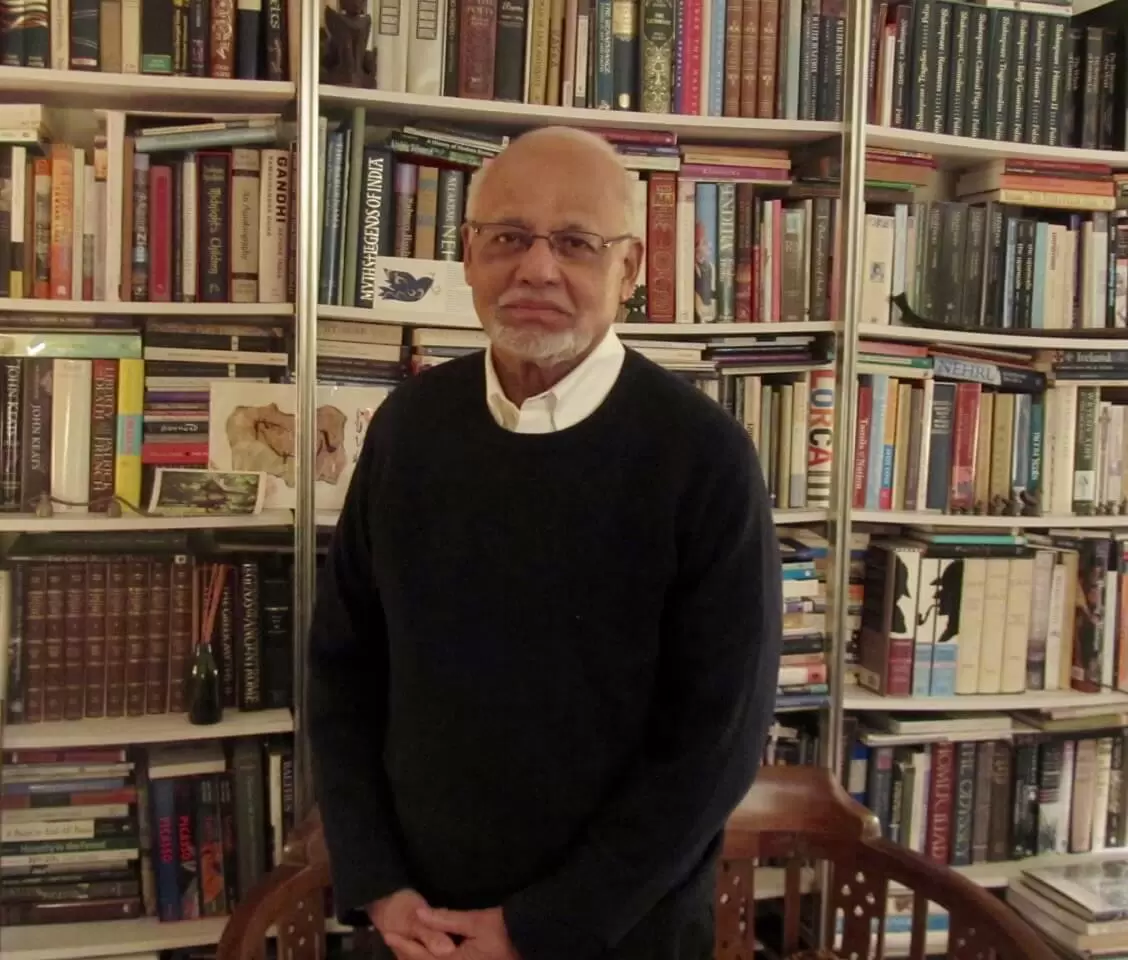Referencing the Covid-19 pandemic, fiction writer, editor and educator Lisa Lynn Biggar recently said in Critical Read, “Science will find a cure, but art will give us a healing path to follow.” To see how, go to Manhattan’s Lower East Side and visit the Lichtundfire gallery’s sublime show “When Night Falls.”
The show’s curators—Priska Juschka (Lichtundfire) and Robert Curcio (curcioprojects)—have brought together paintings and multi-media works by ten artists from across the U.S. and Brazil. The majority of the art works have been expressly made for the show (July 15-August 8, 2020), in response to a call by the curators to contribute art addressing the awe and wonder that nighttime has long evoked.

Awe and wonder are primordial, universal emotions that have driven the human pursuit of knowledge, including the embodied cognition of which art is a manifestation. Progenitors of paradigm shifts in science and other human thinking, they are more necessary than ever at times of crisis, such as the present juncture when the world faces simultaneously two existential challenges—climate change and the COVID-19 pandemic—as well as other serious problems.
“When Night Falls” is a most timely exhibit. Through allusiveness, symbolism and ambiguity, the art works on display open up feelings and thinking that unveil new vistas, sometimes unending, sometimes giving glimpses of the unknown or of new possibility, even as they eschew mere instrumentality. They induce in the viewer a profound engagement.
Indeed, they make me think of the art of Gerhard Richter, which the Met Breuer recently celebrated. I think especially of his late squeegee abstractions. Reviewing the Met show, art historian Susan Tallman spoke of Richter’s art as “an assertion of endless possibility.” I wonder if this insight doesn’t apply to all good art.

The paintings of Arlene Santana, Leslie Ford and Vian Borchert suggest worlds beyond themselves, creating as well a feeling of fathomless depth. The resulting psychological and spiritual resonance is akin to an imaginative experience that is at once expansive, boundless and oceanic. Look now at the same paintings in conjunction with Martin Weinstein’s composite paintings that suggest the interplay of perception and memory through painted layers of transparent acrylic sheet. Time now grows inside you, giving your engagement with the four painters’ works the presence of four dimensions.
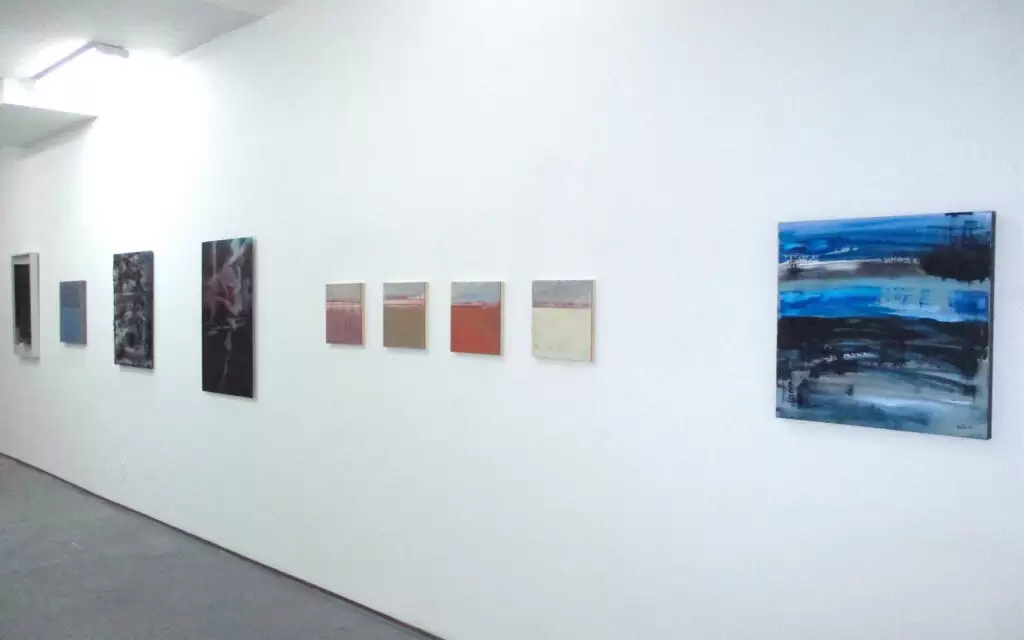
Two paintings by Robert Solomon sourced from journeying at night on a country road synthesize a serene expansiveness with dread and foreboding even as they bring together broad sweeps of abstraction with glimpses of figuration. The resulting symbolic content creates the very sinews of the aesthetic sublime. The sublime is also in action in Gretl Bauer’s works.
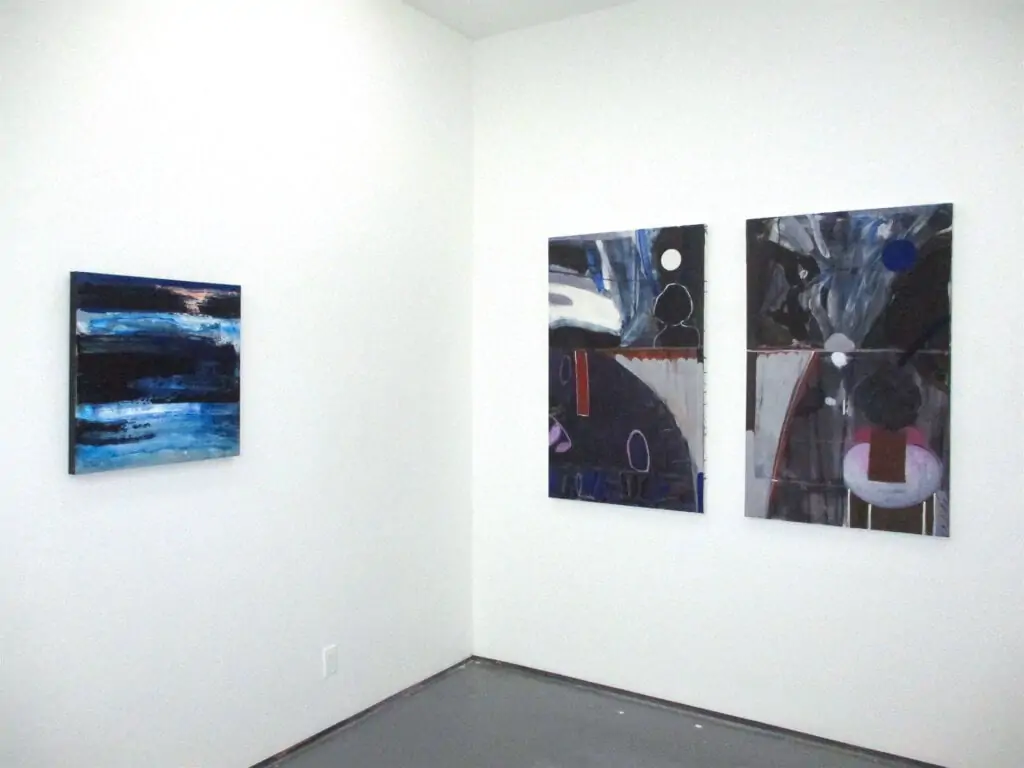

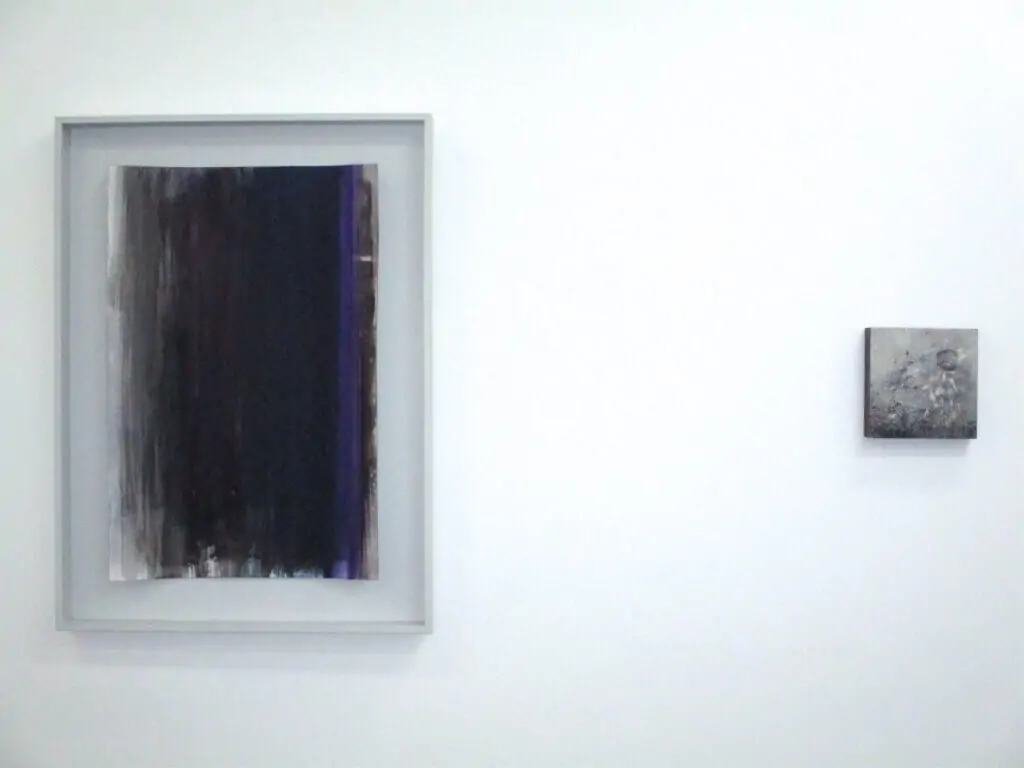
Her multi-media object employing paper, thread and gouache with great evocativeness is especially striking, for it suggests light struggling to emerge from darkness. A worthy coda to this discussion is Jane Fire’s digital print literally and metaphorically illuminating a dark rose that NASA grew in 1998 on a space shuttle mission.
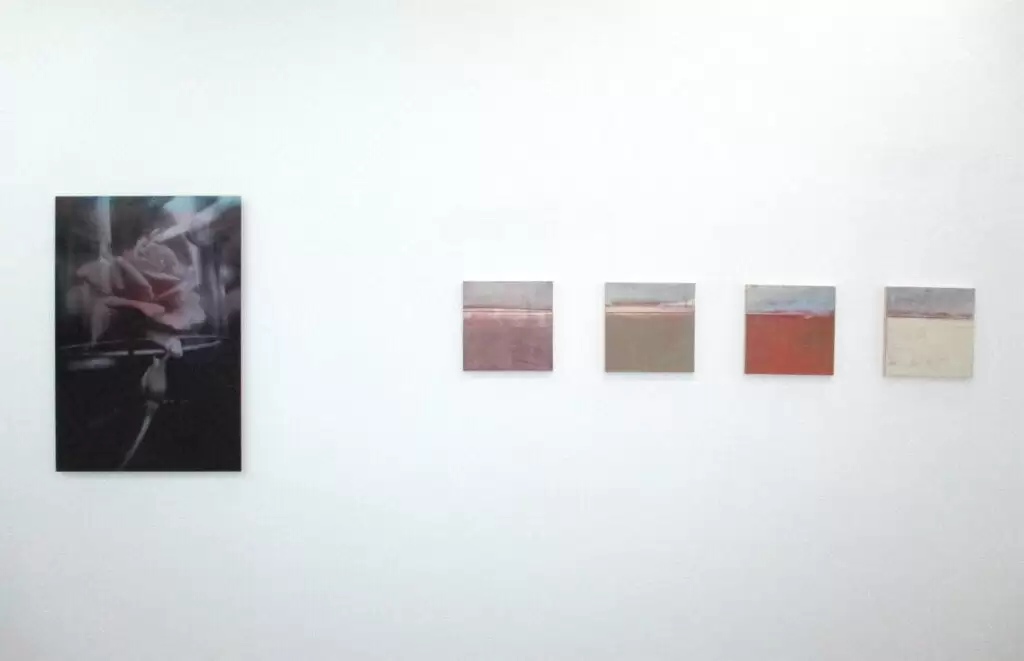
Augustus Goertz’s three mixed-media paintings make you think of the Cosmic Microwave Background, the landmark sign of the Big Bang with which the universe originated 13.8 billion years ago. So sublime was Mt. Blanc to Percy Bysshe Shelley he was moved to write a great Romantic poem in its praise. Goertz seems to be following in his footsteps, inspired by a much vaster cosmic creation, the source of it all in fact. Bobbie-Moline Kramer is also a cosmic artist, imagining, in two paintings, the alignment of the stars at her birth and death.

Brazilian artist Lenora Rosenfield looks at the stars through a glass ceiling in her studio, and the two paintings she has contributed to the show are products of her deep gazing. Her deep blue sky is so striking it reverberates in your mind; setting it off from her white stars and the blue-black of her felt backing, she achieves sublimity through the color itself.

The frontiers of paint’s possibilities are still being pushed from within painting’s domain. One might even say that a reinvention of the aesthetic sublime is under way. “When Night Falls” is on that cutting edge.
©2020 When Night Falls, Siba Das 2020
Siba Kumar Das is a former U.N. official who writes about art. He served the United
Nations Development Program in New York and several developing countries. He now
lives in the U.S., splitting his time between New York City and upstate New York. He
has published articles on artists living in the Upper Delaware Valley, and is presently
focusing on art more globally. Recent articles have appeared in dArt International, Arte
Fuse, Artdaily.com, Dusty Wright’s Culture Catch, and Whitehot Magazine of
Contemporary Art.



